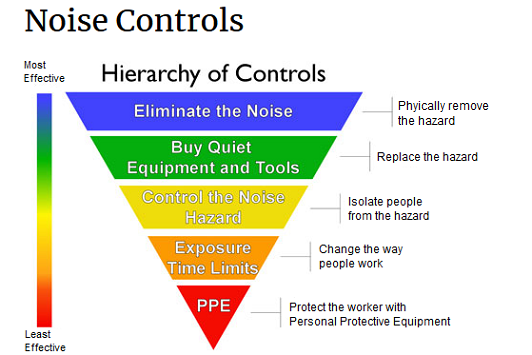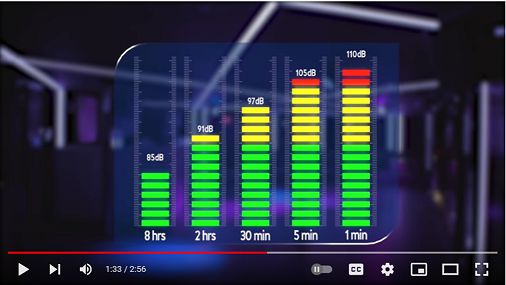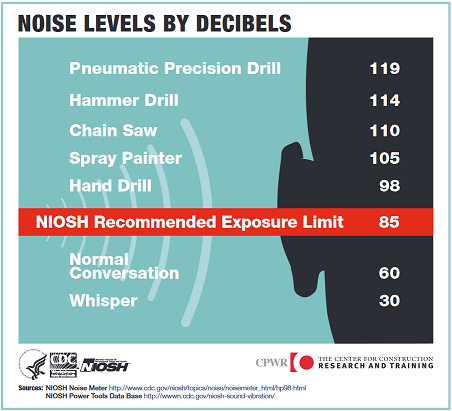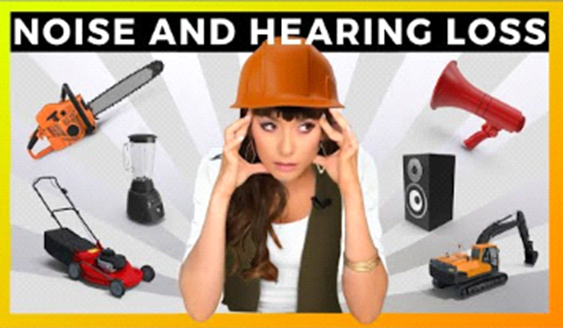Take the time to learn more about sound levels, duration limits, and steps you can take to protect your hearing.
Occupational safety and health professionals use the Hierarchy of Control to determine how to implement feasible and effective controls. This approach groups actions by their likely effectiveness in reducing or removing the noise hazard.

Elimination or Substitution: In most cases, the preferred approach is to eliminate the source of hazardous noise. When elimination is not possible, substitution of the loud equipment for quieter equipment may be the next best alternative to protect workers from hazardous noise.
Engineering and Administrative Controls: To the extent feasible, engineering controls, administrative controls, and work practices shall be used to ensure that workers are not exposed to noise at or above 85 dBA as an 8-hour Time Weighted Average (TWA). Engineering controls require physical changes to the workplace such as redesigning equipment to eliminate noise sources and constructing barriers that prevent noise from reaching a worker. If engineering controls are not feasible, employers an explore potential administrative controls, such as scheduling that will minimize exposure, providing quiet and convenient lunch and break areas.
Personal Protective Equipment (PPE): When all options for eliminating or reducing the noise at the source are exhausted, hearing protection devices such as earplugs or earmuffs should be made available to workers, at no cost, to sufficiently attenuate noise so that their “real-world” exposure is below 85 dBA as an 8-hour TWA.

Sound level and duration are important to consider when protecting your hearing from damage.
Sound Pressure Level
- Pressure wave traveling in air or water
- Expressed in decibels (dB) – It is the perceived loudness
- Analogy: surface wave made when you throw a stone into a calm pool of water
- Logarithmic scale
- Small dB increase represents large increase in sound energy.
- 3 dB increase is a doubling of sound energy
- 10 dB increase represents a 10-fold increase
- 20 dB increase represents a 100-fold increase
| Time to Reach 100% of Daily Dose | Exposure Level per NIOSH REL | Exposure Level Lawrence University Beyond Limits | Protection Required – Noise Reduction Ratio (NRR) |
|---|---|---|---|
| 8 hours | 85 dBA | 75 dBA – reduced from 85 | NNR 25 |
| 4 hours | 88 dBA | 80 dBA – reduced from 88 | NNR 25 |
| 2 hours | 91 dBA | 85 dBA – reduced from 91 | NRR 25 w/ear muffs |
| 1 hour | 94 dBA | 85 dBA – reduced from 94 | NRR 25 w/ear muffs |
| 30 minutes | 97 dBA | 85 dBA – reduced from 97 | NRR 25 w/ear muffs |
| 15 minutes | 100 dBA | 85 dBA – reduced from 100 | NRR 35 w/ear muffs |

Signs of Hearing Loss Include:
- Frequently asking people to repeat themselves.
- Turning an ear in the direction of sound in order to hear it better.
- Understanding conversation better when you look directly at the person. Seeing their facial expression and lips movements can help a someone understand another better is there is a hearing problem.
- Being unable to hear all parts of a group conversation.
- Experiencing pain or ringing in the ears (tinnitus).
- Listening to the TV or radio at volume levels higher than other people normally listen to.
If any of these signs are displayed, a person can take action by visiting an audiologist for a hearing test. An audiologist is a health professional who specializes in diagnosing and treating people with hearing problems.

PROTECT YOUR HEARING! From ALLY SAFETY
https://www.youtube.com/watch?v=ehV9d7gabfc [8:01]
Hearing Safety Part 1 – CopperPoint Insurance Companies
https://www.youtube.com/watch?v=sjkS2HlaZ0c [8:07]
https://www.cdc.gov/niosh/topics/noise/reducenoiseexposure/noisecontrols.html
